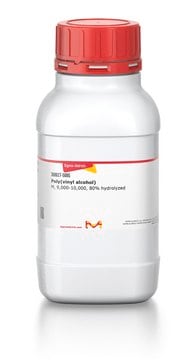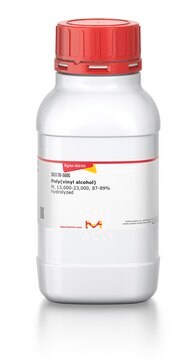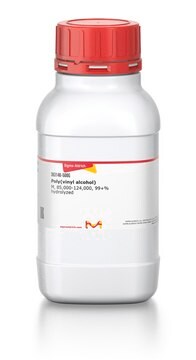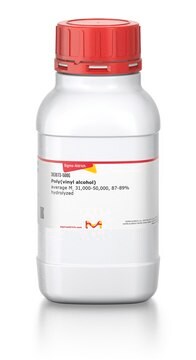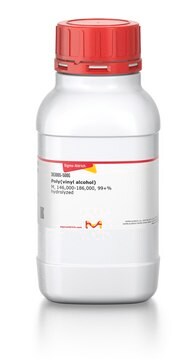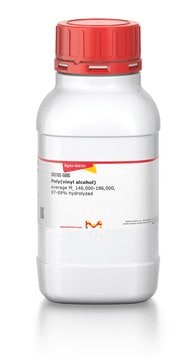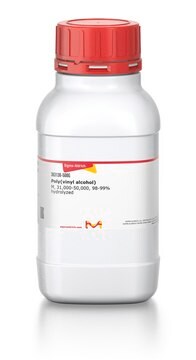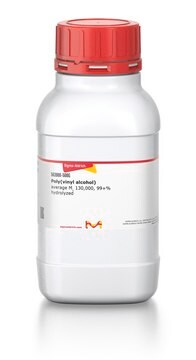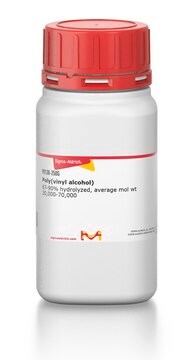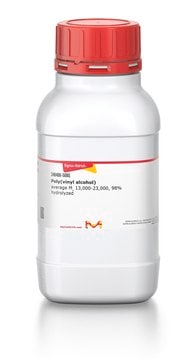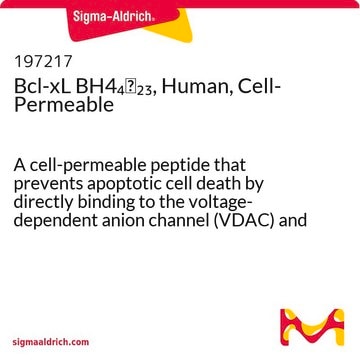363081
Alcol poli(vinilico)
average Mw 85,000-124,000, 87-89% hydrolyzed
About This Item
Prodotti consigliati
Forma fisica
powder or crystals
PM
average Mw 85,000-124,000
Caduta di sfera
23-27 cP, 4 % in H2O(20 °C)(lit.)
InChI
1S/C2H4O/c1-2-3/h2-3H,1H2
IMROMDMJAWUWLK-UHFFFAOYSA-N
Cerchi prodotti simili? Visita Guida al confronto tra prodotti
Categorie correlate
Descrizione generale
Applicazioni
PVA can be used as a surface stabilizer in preparing drug delivery carriers for the slow release of tetracycline.
Highly concentrated alginate/polyvinyl alcohol (PVA) bioinks can be used to prepare 3D bioprinting porous scaffolds. Partial diffusion of PVA sols from printed scaffolds creates a large number of micropores.
PVA can also be used as a water-soluble polymer template to synthesize nanosized polypyrrole via in situ polymerization. PVA generates stable dispersions of polypyrrole nanospheres in water and the size of nanospheres depends on the molecular weight and concentration of PVA.
Codice della classe di stoccaggio
11 - Combustible Solids
Classe di pericolosità dell'acqua (WGK)
WGK 1
Punto d’infiammabilità (°F)
No data available
Punto d’infiammabilità (°C)
No data available
Dispositivi di protezione individuale
Eyeshields, Gloves, type N95 (US)
Certificati d'analisi (COA)
Cerca il Certificati d'analisi (COA) digitando il numero di lotto/batch corrispondente. I numeri di lotto o di batch sono stampati sull'etichetta dei prodotti dopo la parola ‘Lotto’ o ‘Batch’.
Possiedi già questo prodotto?
I documenti relativi ai prodotti acquistati recentemente sono disponibili nell’Archivio dei documenti.
I clienti hanno visto anche
Il team dei nostri ricercatori vanta grande esperienza in tutte le aree della ricerca quali Life Science, scienza dei materiali, sintesi chimica, cromatografia, discipline analitiche, ecc..
Contatta l'Assistenza Tecnica.
